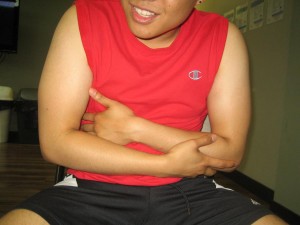Giardia lamblia infection is an infection of the small intestine by the Giardia duodenalis parasite.
Generally, upon ingestion of the parasite, the stomach acid activates the cyst and it develops into the disease-causing trophozoite. The parasite can also produce cysts that can exit the body via feces and spread the infection to other people.
https://www.youtube.com/watch?v=ETDaxYDc_1U
Cysts of the parasite are present in the feces and the main reason why it spreads to others is contamination of food with feces or by direct oral contact to feces. The cysts can survive in the water which makes it the common cause of water-borne, parasitic illness in the U.S.
Domestic and wild mammals can become infected with the parasite; however, it is not clear how often the disease spreads to humans via domestic or wild mammals.
Signs and symptoms

Management of giardiasis
Generally, the most common treatment is by metronidazole (Flagyl) for five to ten days. This, however, can cause discomfort by causing symptoms such as nausea and a metallic taste as well as dizziness and headache.
Another method is by Tinidazole and is highly effective at treating giardiasis. The drug can be given as a single dose and is well tolerated. Other alternatives include albendazole and mebendazole and they are also effective.
Occasionally, treatment might not be effective in eradicating the parasite. In these cases, the drug may be changed or used for a longer duration or a higher dose may be administered. Combination therapy also may be effective by using one more drug, such as quinacrine and metronidazole together.
FACT CHECK
https://www.cdc.gov/parasites/giardia/index.html
